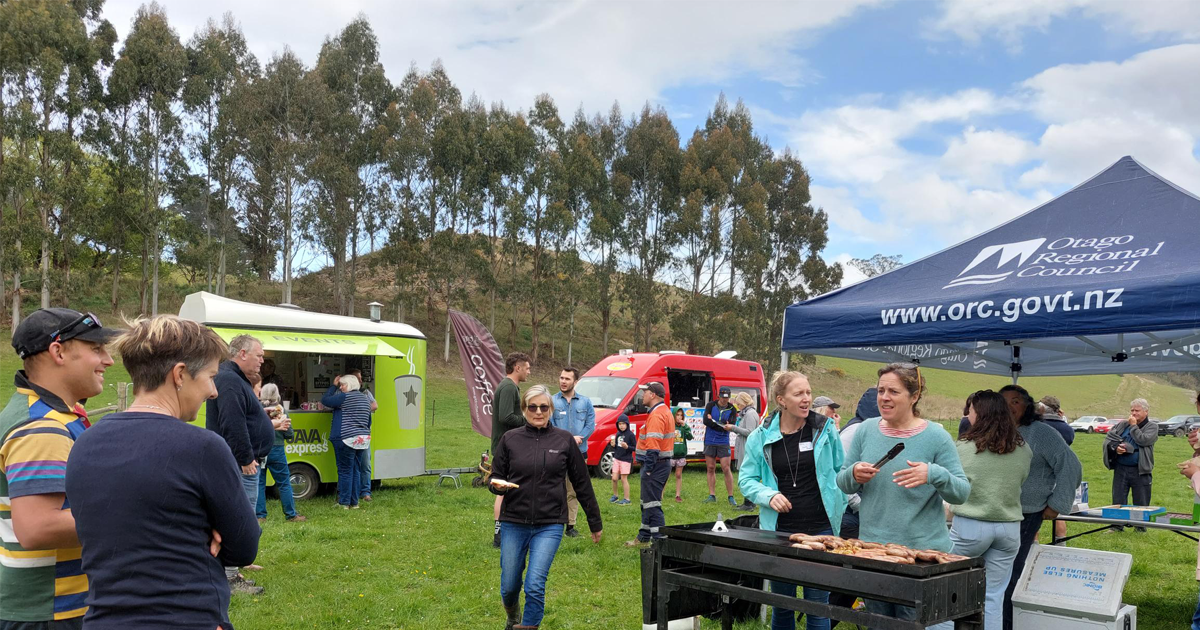-
-
-
-
-
-
Events in the community
-
-
-
Sunday, 18 May 2025
11 am - 3 pm
944 Palmerston-Waikouaiti Road, East Otago
Parking available onsite
Save the date!
Ice cream? Coffee? BBQ and a fabulous community project, anyone? You’re invited to the Toitū Te Hakapupu’s celebration planting day as this amazing 4-year project comes to a close.
Come and have a treat, help us complete some riverside native planting, and find out what has been achieved and what is planned for the future.
We will be showcasing successes and achievements gains alongside project partner Kāti Huirapa Rūnaka ki Puketeraki, and with collaborative efforts of the East Otago Catchment Group, landowners, and the community.
Want to know more?
Reach out to Project Assistant, Soraya Engelken
Phone: 022 452 3818
Email: soraya.engelken@orc.govt.nz
Session One:
Tuesday, 8 April,
4.00pm-7.30pm
Waikouaiti Event Centre,
203 Main Road, Waikouaiti
In Session One, we reflected on what has been accomplished and generated ideas for how to continue the project’s legacy.
This structured approach was to:
- Encourage full participation by creating a safe and inclusive environment
- Reflect on past achievements of the project and lessons learned
- Include brainstorms and evaluate ideas for long-term action
- Develop a shared plan forward, ensuring the collective vision is upheld
Those attending helped to shape the future of our collective efforts to protect and enhance our catchment.
The second session refined ideas into a clear, community-driven succession plan with attainable actions.
Session Two:
Monday, 28 April,
4.00pm-7.30pm
Waihemo Lodge Hotel,
13 Runbrake Street Palmerston
In Session Two, we refined ideas from session one into a clear, community-driven succession plan with attainable actions.
If you missed either session or have any questions, please get in touch with:
Sam Dixon (Otago Catchment Community)
Email: sam.dixon@otagocatchments.co.nz
Phone: 027 777 0940
If you have any questions about the project or the sessions, please get in touch with:
Melanie White (Otago Regional Council)
Email: melanie.white@orc.govt.nz
Phone: 027 357 2568
Wednesday, 23 October 2024
6:30pm to 8:30pm
East Otago Events Centre
203 Main Road in Waikouaiti
The project team provided a project update and then shared the working draft Catchment Action Plan for Te Hakapupu/Pleasant River Restoration Project.
Participants broke into groups to workshop aspects of the Plan including:
- Whether the plan reflects your aspirations and priorities
- Refining the vision, outcomes, and actions; and
- How progress can be measured
Sunday, 18 August 2024 Sunday 25 August 2024
11:00am to 2:00pm
Hagan property on Tumai Road, Flag Swamp
Look for the flags but take caution entering the property off the Palmerston-Waikouaiti Road SH1 as this is a long, straight stretch of road.
Due to heavy rain predicted on Sunday 18 August, the Toitū Te Hakapupu community planting day was been postponed one week, it was good to see you all on Sunday 25 August.
Planting: Holes were pre-dug with native plants ready to go in the ground. People brought their own shovel, gumboots, and gloves.
Snacks provided: There was a BBQ onsite, a coffee cart and Mr Whippy — plenty of refreshments to keep people going.
Parking: Paddock parking was available.

Amazing effort at the planting day August 2024

Keeping volunteers going at Toitū Te Hakapupu planting day Aug 2024

Staking the new planting at Toitū Te Hakapupu Aug 2024

It takes a community at Toitū Te Hakapupu planting day Aug 2024




Sunday, 19 May 2024
11:00am to 4:00pm
End of Wetlands Road, Goodwood - just North of Waikouaiti
There were opportunities to discover how to contribute to the well-being of your community through fun and engaging community science activities.
The following activities were available throughout the day with a bird expert leading a bird watching walk 1-2pm.
- Learn about what is in our local streams and rivers.
- Watch a possum and mustelid trapping demonstration.
- Hear what has been achieved in the Toitū Te Hakapupu project.
There was a BBQ onsite, and Cup & Cone will be serving real fruit ice cream, smoothies and hot drinks.
We hope you had a great time!

Monday, 6 November
Toitū Te Hakapupu / Pleasant River catchment
Please note: this was not for compliance.
This flyover allowed ORC staff to confirm mapping in some areas of Te Hakapupu, that then enabled the project to prioritise sediment hotspots and identify where planting and fencing opportunities and other work will be most effective to improve water quality.
The flight took no more than 4-6 hours over a number of areas in the catchment.

Wednesday, 11 October
More than 30 year 5 and 6 students from Karitane and Waikouaiti schools in East Otago took part in a Planting Day just North of Waikouaiti, assisting Toitū Te Hakapupu: The Pleasant River Restoration Project.
As part of the project, a regionally significant wetland has been fenced off on a piece of private land to protect it from stock and the children helped plant over 100 native trees along the riverbank on this property.
They also learnt about the health of the river just before it enters the estuary. One of ORC’s Catchment Advisors, Jack Mathieson, spoke about stressors, such as increased levels of nutrients, sediment, heavy metals and pollution, how they accumulate at the bottom of the river and can impact the catchment, harming the flora and fauna.
The group did some water quality testing and saw some taoka (treasured) species in the river including kōura (crayfish) and tuna (eels).
The children also took part in a cultural health discussion with local mana whenua representative, Julia Rata-Te Raki.
Ka pai, kids!
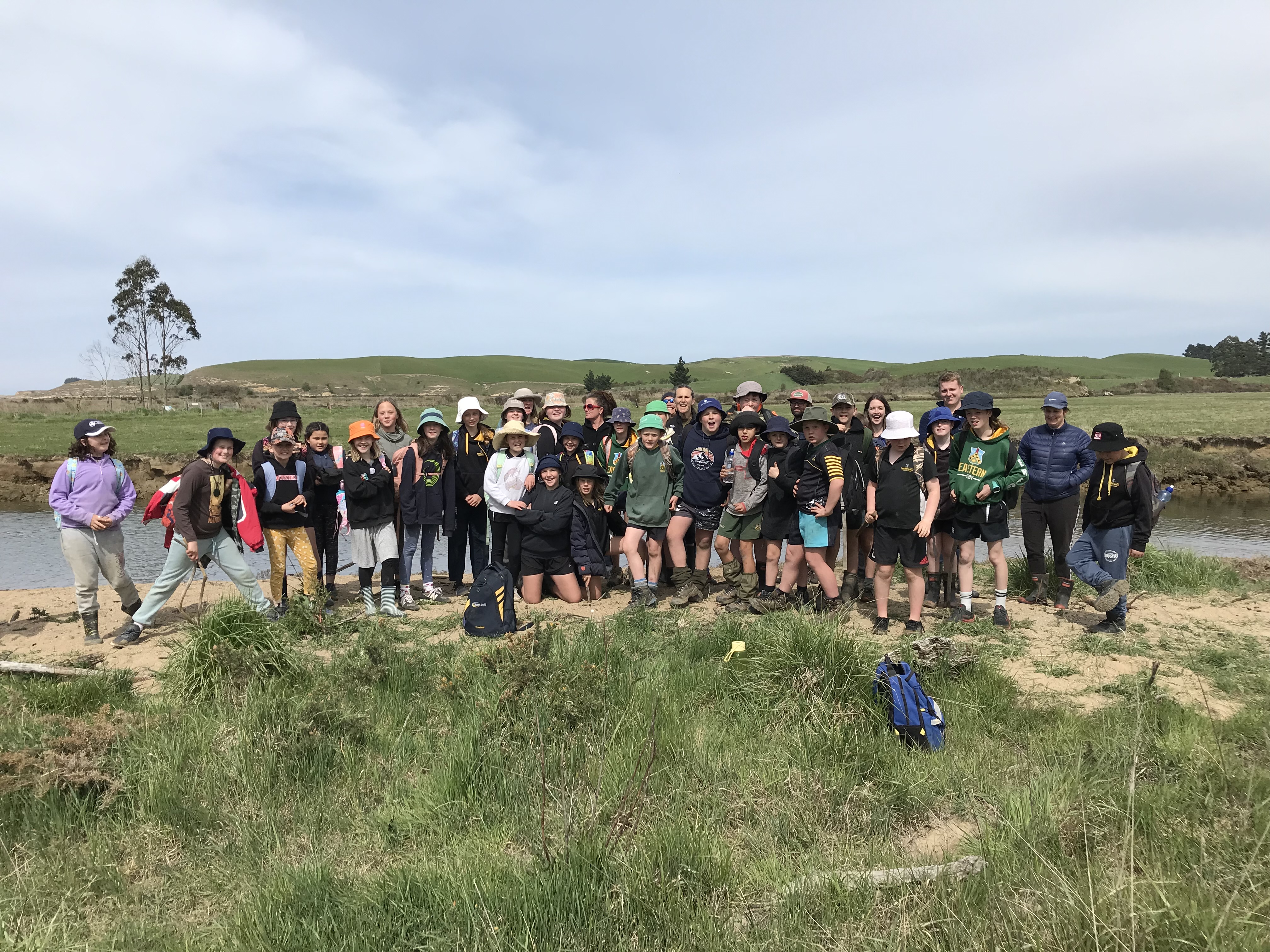
Sunday, 3 September 1pm - 4pm
Corner of Jefferis Road and SH1 (State Highway 1), Waikouaiti (See on Google Maps)
The Toitū Te Hakapupu Restoration Project celebrated the start of planting in the Pleasant River area with a community planting day.
It was a chance for those not familiar with the project to hear more about the vision the community has for Te Hakapupu, to learn what work’s been started, what’s upcoming and help plant some natives along a waterway in the river catchment.
1,200 plants were planted.
A free barbeque and ice cream was provided.
This planting day gave the community the opportunity to help contribute to the improvement of water quality in the area.
It was a great way to spend time with Dad on Father’s Day; giving back to the environment whilst enjoying a barbie and a Mr Whippy!
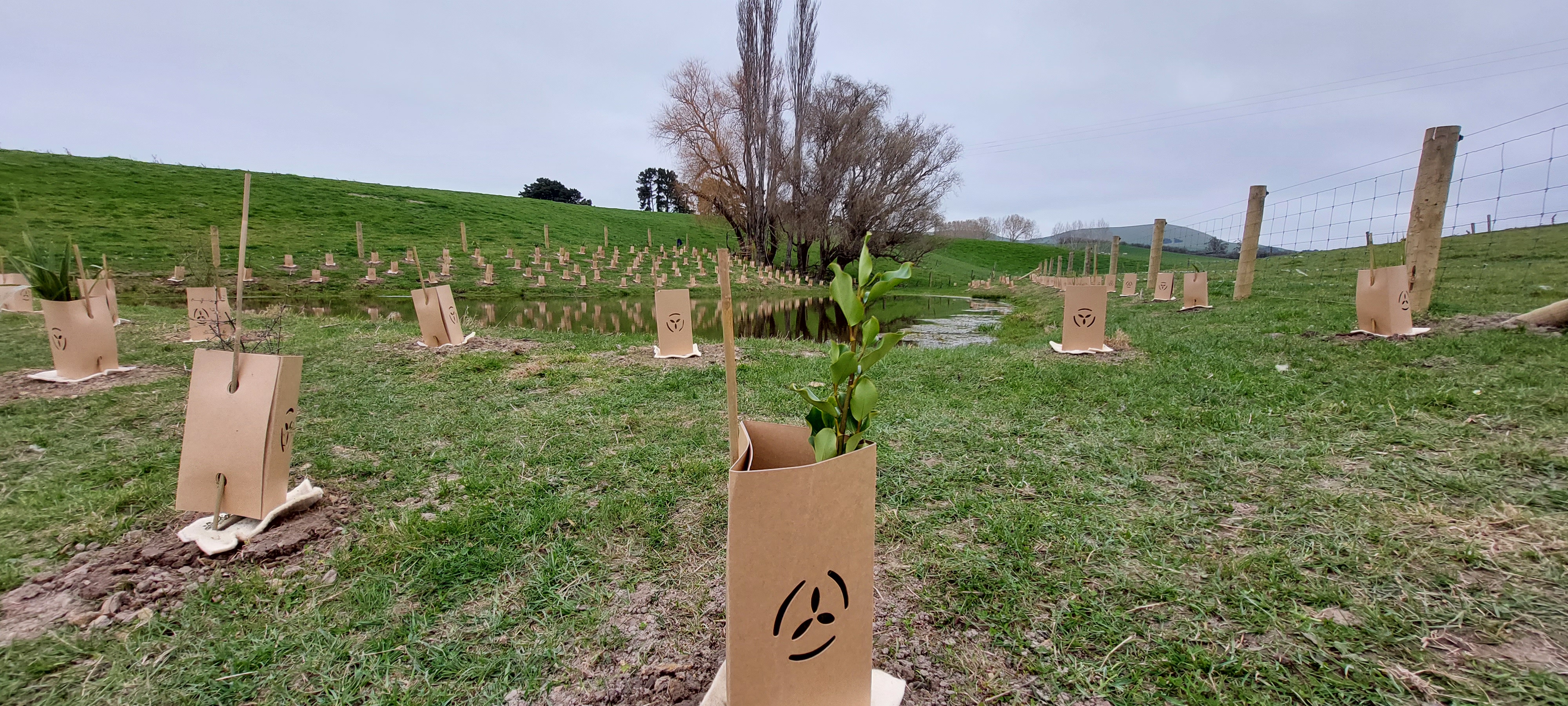
Monday, 14 August 6.30pm – 8.30pm
East Otago Events Centre in Waikouaiti
Around 15 community members attended the hui, workshopping ways to build on the ideas from the last meeting and achieve the vision the community outlined for Te Hakapupu catchment.
To start off, Mel White from the Otago Regional Council provided a brief update of progress on the Toitū Te Hakapupu project. Matt Dale from the Ahikā science team then outlined key results from the baseline water quality monitoring.
The community quickly identified actions they believed would help address problems while also meeting their values and goals for the catchment. Locations for these actions were also discussed and lists made of groups and organisations that could help achieve them.
For water quality, stabilisation of slip prone areas was a key action, as was the addition of sediment traps and riparian planting in appropriate locations. Recognising the low flow characteristics of the catchment during summer, enhancement of the deeper pools that can become disconnected during dry spells was also considered important by the group.
In relation to land use, actions included planting natives along the boundaries between farmland and forestry to help suppress weed species and enhance biodiversity. Slowing the speed of drainage water was another action to reduce the erosive effects in high flows. For example, by putting purpose built ‘sock’s on the end of drainage pipes.
Actions for the estuary-wetland complex focussed more on kōrero with landowners about the new wetland rules and the removal of barriers such as flap-gates to help the salt marsh regenerate.
The group reflected on their great work over kai and a cuppa, and the idea of a beautiful, flourishing catchment with healthy wai and healthy whenua that is recognised as a destination to visit.
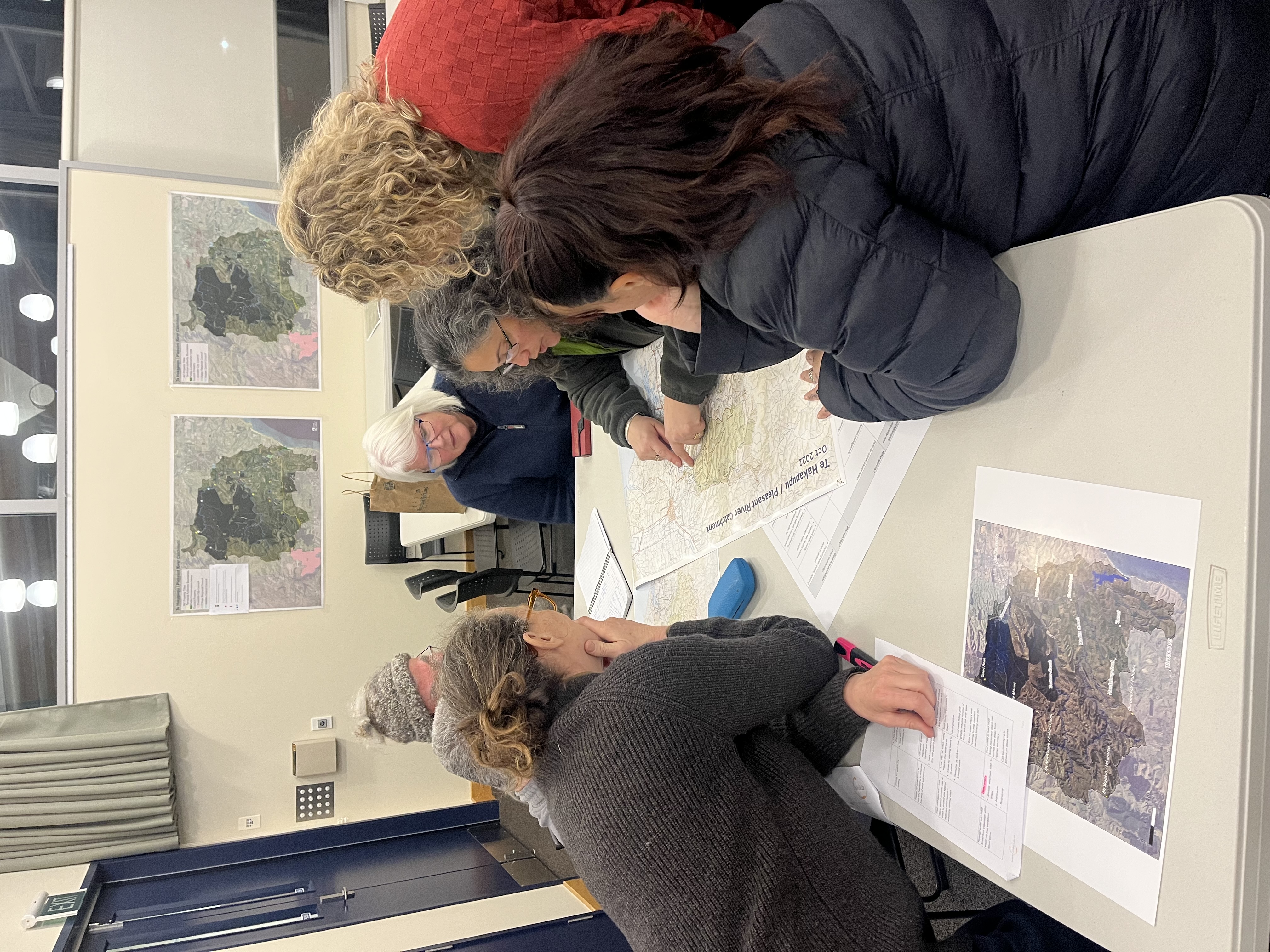
Wednesday, 24 May 2023 6:30pm – 8:30pm
East Otago Events Centre in Waikouaiti
Around 20 community members attended the hui, where outcomes from the work done since the last community hui were presented and the role and benefits of a catchment action plan were shared.
Associate Professor Marc Schellenberg of the University of Otago presented a summary of results from monitoring of water quality, ecological health, and scientific research undertaken in recent years. This included a first glimpse of the real-time water quality measurements taken from River Watch wakas which people found very interesting.
The first workshop session then posed four questions about the Te Hakapupu catchment to those present. The questions covered what was special and important about the catchment, what issues or challenges it faced, what is important for management of the catchment, and finally, what the group thought the catchment should be like for future generations.
A wide range of themes emerged covering good water quality and healthy ecosystems, along with access and enjoyment of the unique aesthetics of the catchment’s waterways and its four peaks. Farming and forestry practices that complimented these themes were also discussed, as well as the importance of the overall link between healthy land and water, healthy people, and healthy connected communities.
Another short workshop followed, exploring types of involvement the community would like in regard to further scientific initiatives. Options included recording types and numbers of fish and bird species associated with the estuary and river.
The project team will now build all this new information into the first full version of the Te Hakapupu/Pleasant River catchment action plan over the next few months.

Wednesday, 15 February 2023 7pm - 9pm
East Otago Events Centre in Waikouaiti
A community meeting in Waikouaiti to support landowners looking to get involved in some of the work Toitū Te Hakapupu has planned for 2023, chiefly fencing and native planting.
There was an interactive mapping session to collect local knowledge of the catchment such as known sediment hot spots, corrections were made to current land use maps, and discussions were had around proposed monitoring sites.
Opportunities for the rest of the community to help were also identified, including scientific monitoring, planting days and surveys. With time for feedback and questions from the greater community.

December 2022
More than 1600 oioi plants have been planted around the South Arm of Te Hakapupu estuary thanks to the hard work and collaborative efforts of the Kāti Huirapa Rūnaka ki Puketeraki marae nursery and Tūmai Beach Restoration Trust.
The project was largely funded by Toitū Te Hakapupu; a joint initiative between the Otago Regional Council, Kāti Huirapa Rūnaka te Puketeraki and the Ministry for the Environment.
In an attempt to reintroduce these colourful, native wetland rushes to the area, the kaitiaki (guardians) at Kāti Huirapa Rūnaka ki Puketeraki and some residents at Tūmai Beach farm park have undertaken this as a planting trial to learn the best ways to re-establish the plant around the estuary.
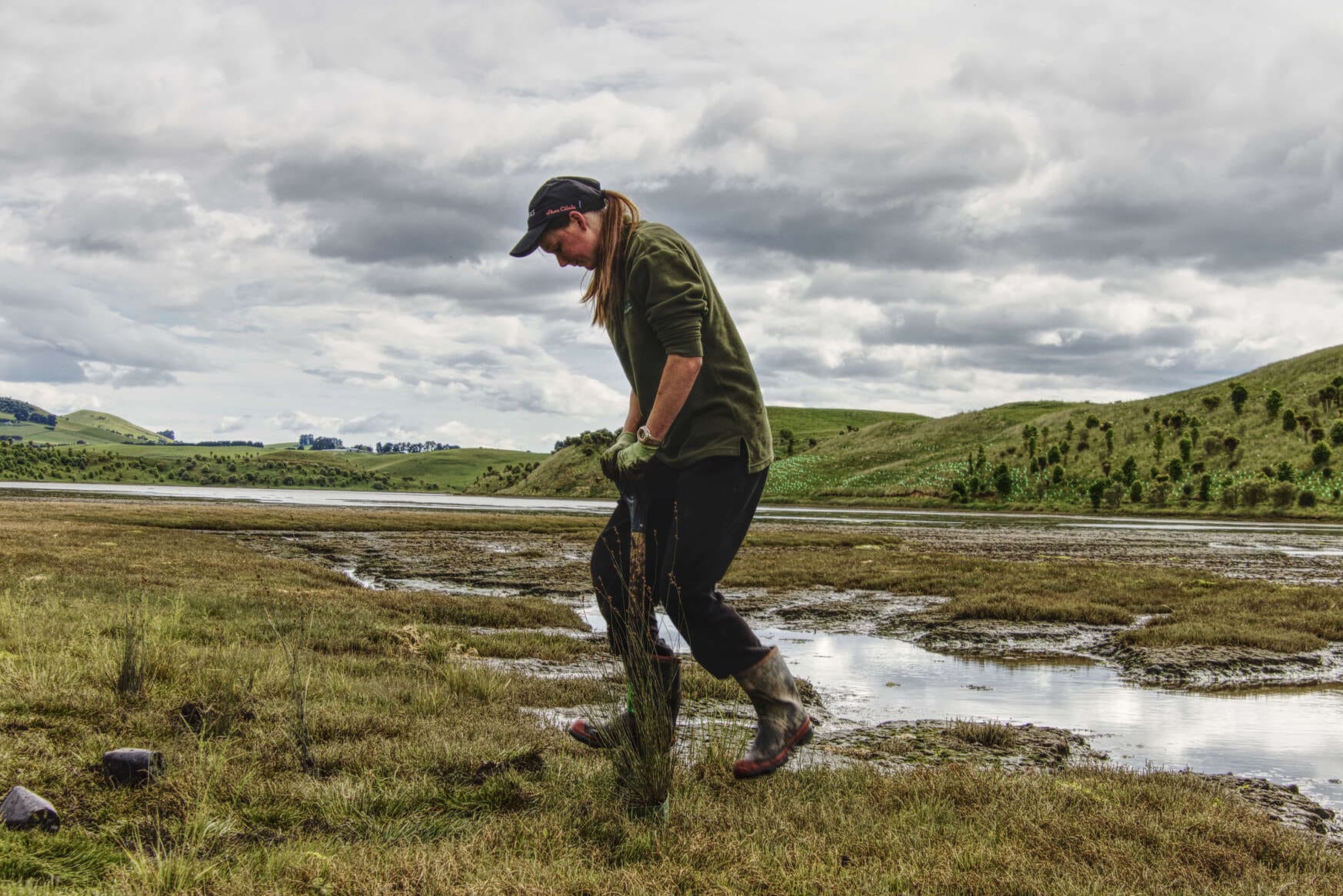
Sunday, 16 October 2022 3pm - 6pm
Alex and Heather Familton’s Farm (Towards end of Pattersons Road) - follow the flags
A relaxed meet and greet event was held on the Familton’s farm to introduce the people behind the project to the community, outline the project’s aims and how it may affect those in the community.
Those that attended were encouraged to ask questions, share their thoughts, values, and what they would like to see for the future of their catchment.
